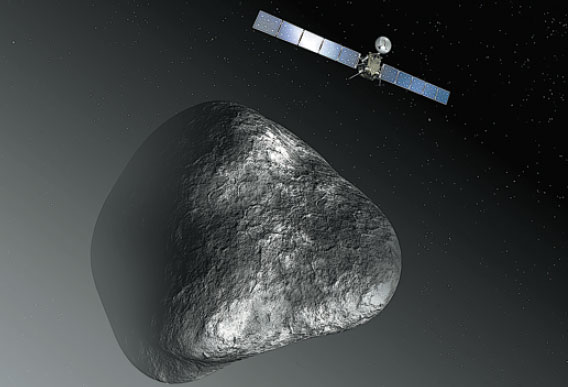A space odyssey nears an end
Once upon a time, two intrepid space adventurers called Rosetta and Philae set out from Earth to explore a comet far, far away.
So begins the fairy tale adventure of Europe's comet chaser and robot probe, steel boxes with charming cartoon counterparts and a global following of fans fated for heartbreak when the pair severs ties with Earth forever.
"I think there will be a lot of tears," said European Space Agency senior science adviser Mark McCaughrean ahead of D-Day on Sept 30.
After 2 years in orbit around comet 67P/Churyumov-Gerasimenko, hundreds of millions of kilometers from home, Rosetta will terminate its groundbreaking deep-space mission by touching down on the icy dustball.
Running out of power, Rosetta will join already-spent robot lab Philae in an eternal loop around the sun on the surface of their new alien world.
The signal will die as the craft's antenna bends away from Earth.
Trouble is - many children, even some adults, have come to think of the machines as cute cartoon characters - a sister with her small brother bravely prodding and sniffing a comet and sending data back to Earth.
Do these storybook heroes now die?
Rosetta and Philae's exploits have made them rare science celebrities, each with its "own" Twitter account. They have sold T-shirts, hoodies and plush toys.
Cartoon videos endow the duo with human features - eyes to see with, mouths for smiling, eyebrows that lift in amazement, as well as arms, hands and for Philae - a pair of spindly legs.
They are made to exhibit emotions as well: affection, trepidation, courage and exhilaration.
Now the very people who gave birth to the endearing duo face a difficult task.
"In a sort of coldblooded way, we need to make sure that people understand that it really is over," said McCaughrean, who has been closely involved in the mission's public profile.
"OK, we've created these lovable characters and so on, but there's a limit, it has to end."
|
An artist's rendering of the Rosetta spacecraft at comet 67P/Churyumov-Gerasimenko. The spacecraft measures 32 meters across including the solar arrays, while the comet nucleus is thought to be about 4 kilometers wide. European Space Agency Via Afp |



















